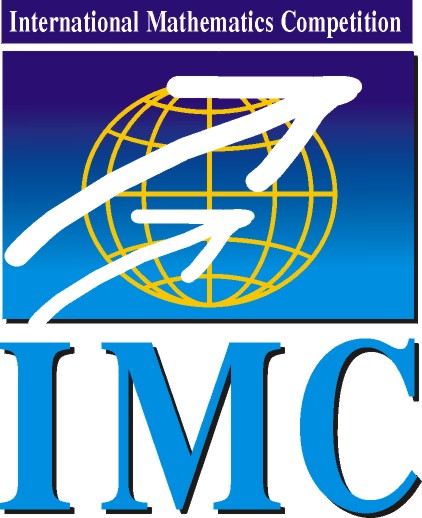
|
International Mathematics Competition
|
IMC 2024 |
| Information | Schedule | Problems & Solutions | Results | Contact |
IMC2023: Problems on Day 2
Problem 6. Ivan writes the matrix \(\displaystyle \begin{pmatrix} 2 & 3 \\ 2 & 4 \end{pmatrix}\) on the board. Then he performs the following operation on the matrix several times:
- he chooses a row or a column of the matrix, and
- he multiplies or divides the chosen row or column entry-wise by the other row or column, respectively.
Can Ivan end up with the matrix \(\displaystyle \begin{pmatrix} 2 & 4 \\ 2 & 3 \end{pmatrix}\) after finitely many steps?
Alex Avdiushenko, Neapolis University Paphos, Cyprus
Problem 7. Let \(\displaystyle V\) be the set of all continuous functions \(\displaystyle f\colon[0,1] \to \mathbb{R}\), differentiable on \(\displaystyle (0,1)\), with the property that \(\displaystyle f(0)=0\) and \(\displaystyle f(1)=1\). Determine all \(\displaystyle \alpha\in\mathbb{R}\) such that for every \(\displaystyle f\in V\), there exists some \(\displaystyle \xi\in(0,1)\) such that
\(\displaystyle f(\xi) + \alpha = f'(\xi). \)
Mike Daas, Leiden University
Problem 8. Let \(\displaystyle T\) be a tree with \(\displaystyle n\) vertices; that is, a connected simple graph on \(\displaystyle n\) vertices that contains no cycle. For every pair \(\displaystyle u,v\) of vertices, let \(\displaystyle d(u,v)\) denote the distance between \(\displaystyle u\) and \(\displaystyle v\), that is, the number of edges in the shortest path in \(\displaystyle T\) that connects \(\displaystyle u\) with \(\displaystyle v\).
Consider the sums
\(\displaystyle W(T)=\sum_{\substack{\{u,v\} \subseteq V(T)\\ u\ne v}} d(u,v) \quad\text{and}\quad H(T)=\sum_{\substack{\{u,v\} \subseteq V(T)\\ u\ne v}} \frac{1}{d(u,v)}. \)
Prove that
\(\displaystyle W(T)\cdot H(T)\geq \frac{(n-1)^{3}(n+2)}{4}. \)
Slobodan Filipovski, University of Primorska, Koper
Problem 9. We say that a real number \(\displaystyle V\) is good if there exist two closed convex subsets \(\displaystyle X\), \(\displaystyle Y\) of the unit cube in \(\displaystyle \mathbb{R}^3\), with volume \(\displaystyle V\) each, such that for each of the three coordinate planes (that is, the planes spanned by any two of the three coordinate axes), the projections of \(\displaystyle X\) and \(\displaystyle Y\) onto that plane are disjoint.
Find \(\displaystyle \sup\{V\mid V \text{ is good}\}\).
Josef Tkadlec and Arseniy Akopyan
Problem 10. For every positive integer \(\displaystyle n\), let \(\displaystyle f(n),g(n)\) be the minimal positive integers such that
\(\displaystyle 1+\frac{1}{1!}+\frac{1}{2!}+\ldots+\frac{1}{n!} = \frac{f(n)}{g(n)}. \)
Determine whether there exists a positive integer \(\displaystyle n\) for which \(\displaystyle g(n)>n^{0.999\, n}\).
Fedor Petrov, St. Petersburg State University
© IMC